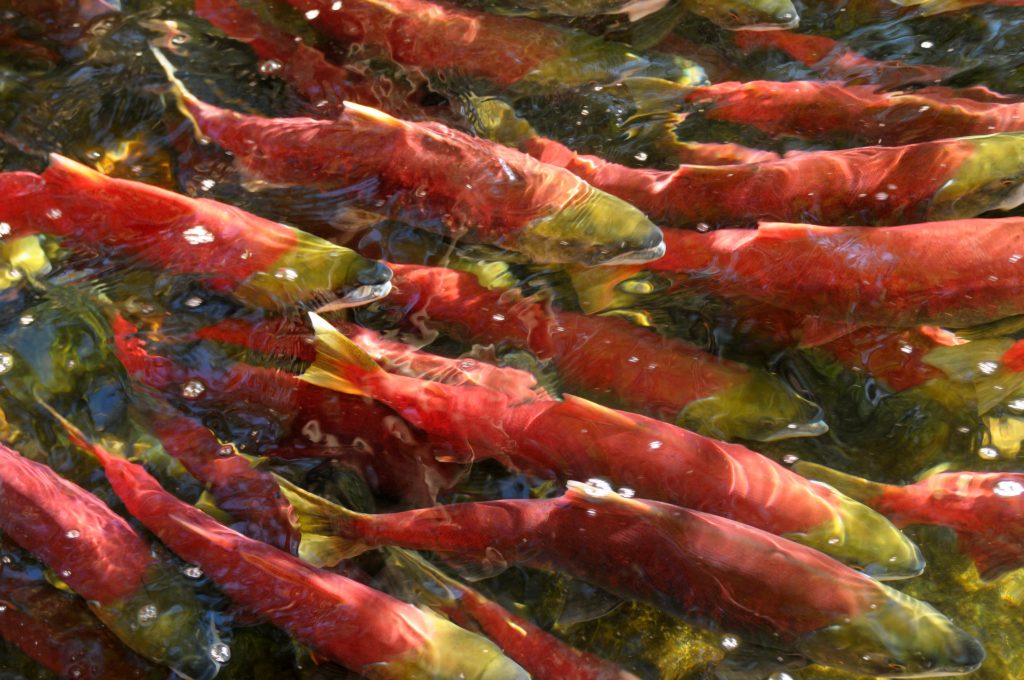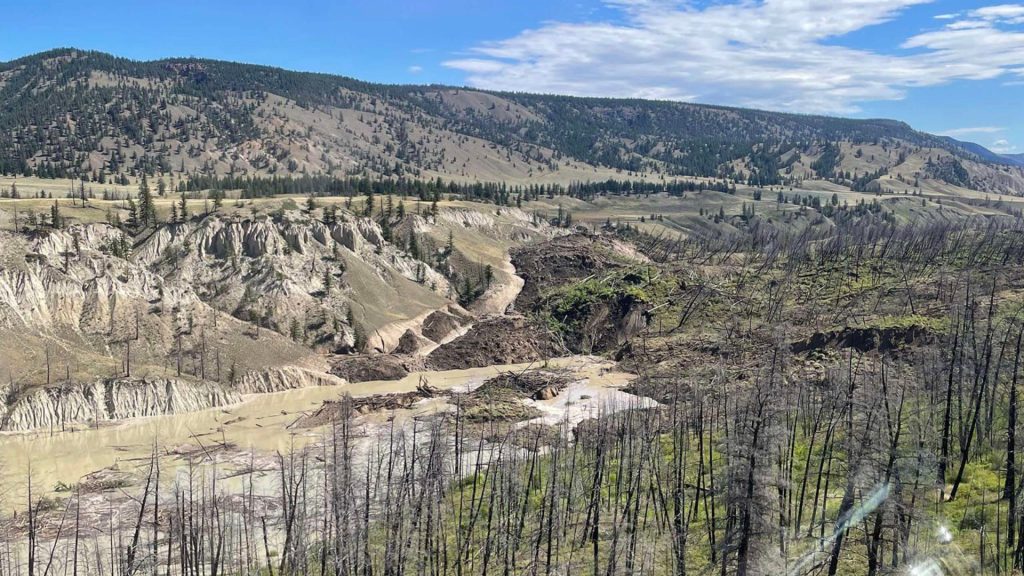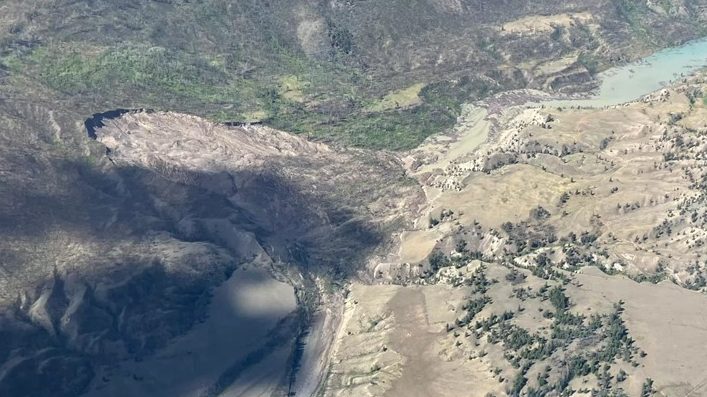Landslide into Chilcotin River prompts salmon run concerns from Tsilhqot’in

Posted July 31, 2024 11:01 pm.
The landslide that prompted an evacuation along the Chilcotin River, west of Williams Lake, Wednesday has raised even more concerns for a local Nation.
Tsilhqot’in Chief Joe Alphonse says the Chilcotin feeds into the Fraser River, and plays an important role for his community.
“We do have on the Chilcotin … the Chilco Lake sockeye run, which was probably the last large, heavy, most consistent sockeye run left in British Columbia until four years ago, with the Big Bar slide — it had a big, detrimental effect on our salmon run that year. So this year was going to be the first year that we were going to get the salmon back,” he told 1130 NewsRadio.
“It’s the highest elevation sockeye run in North America, it’s really cold water. So our salmon run, if you compare it to other salmon runs throughout the province and in North America, we have so many factors working against it. It’s probably one of the most sensitive runs, and yet, we’ve been able to advocate good, sound practices and keep other fishers away from our run to allow our runs to become the most consistent.”
Now, however, he feels that’s at risk again. Alphonse says he’s seen slides completely stop the flow of the Chilcotin River twice in his lifetime.

This can lead to flooding down river and other impacts, he explains, though he tells 1130 NewsRadio that the Tsilhqot’in is relatively safe geographically.
But it’s a race against time to ensure the slide doesn’t have an impact on the upcoming salmon run.
“Around Aug. 10 is when our salmon runs hit our waters so we want all this cleared up and all the debris washed up … before such time. [That’s] our hope,” he said.
“We will be monitoring. We’re anticipating the river’s going to be building up here and it’s going to continue to seep into the soil where the slide went into the river bed. Once that whole system is soaked through, there’ll be so much water pressure coming in behind it that it’ll eventually punch a hole through that whole system and there’s going to be a lot of debris that’s going to get released at that time. Who knows how long it’ll take for that to clear up. Salmon are very sensitive to migration routes and patterns. So we’re concerned that the migration routes of these might be altered. We’re hoping that’s not the case.
“How many obstacles does one species of salmon have to face before its demise?”
Alphonse says while the impact to the wider public may be that they eat farmed fish if the worst case scenario happens, for his community, it goes beyond that.
“We hold one of the last wild stocks left and our people don’t eat farm fish. Plain and simple. We depend on wild game, wild fish, that’s who we are, and that’s why we fight for that protection,” the Tsilhqot’in chief said.
“It’s not much of a place to live if you don’t have wild species. We have to maintain, not for ourselves but for generations to come. I want our children’s children to be able to go down to the rivers and fish wild fish. There’s a lot of importance and we don’t put enough value on that.
“We’re going to be very concerned about feeding our community this winter. Instead of wild salmon our people are going to be driving down to the local grocery store and eating baloney instead,” Alphonse continued.
According to the Tsilhqot’in National Government, the landslide happened upstream near Nagwentled Farwell Canyon before 9:30 a.m. Wednesday.
The regional district said while the Chilcotin River is blocked, the public is advised to stay off the water due to the risk to safety. It warned there is a “high risk” of flash flooding.
Following the slide, the River Forecast Centre issued a flood warning for the Chilcotin River upstream of the landslide near Farwell Canyon. The centre also issued a flood watch for the Chilcotin River downstream of the landslide near Farwell Canyon and Fraser River downstream to Hope.
‘We’re paying for it now’
Alphonse says some members of his community do have properties near the slide site, though he notes they are “relatively safe” and “know how to look after themselves and their properties.”
Regardless, he says “it is devastating to see how big of an area this is affecting.”
“In large part, [the slide] is also a direct result of the 2017 fires that we had. All of the trees that were there that would normally provide stability for the ground isn’t there anymore. The cover, the protection, the root systems of the trees are all dead. So there’s nothing holding the soil, the ground. There’s no protection,” Alphonse explained.

“So we’re still dealing with the 2017 fires, as far as I’m concerned. People wonder that global warming isn’t happening — it’s here, it’s right now, and it’s happening every summer. We’ve seen it everywhere around us and we got to start changing our behaviours, our patterns. Do we want this to be the new norm? That’s exactly what’s happening. Indigenous voices have to be heard, listened to.”
Alphonse says Indigenous voices have been absent from “overall natural resource planning and in large scale” in B.C., adding, “we’re paying for it now.”
“This is what we’re seeing. Governments have to listen to the Indigenous. We have generations of management experience in these areas,” he continued.
“We have to be involved.”
-With files from Charlie Carey








